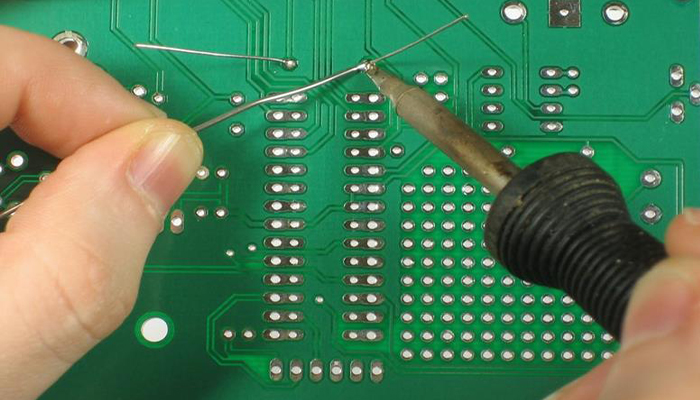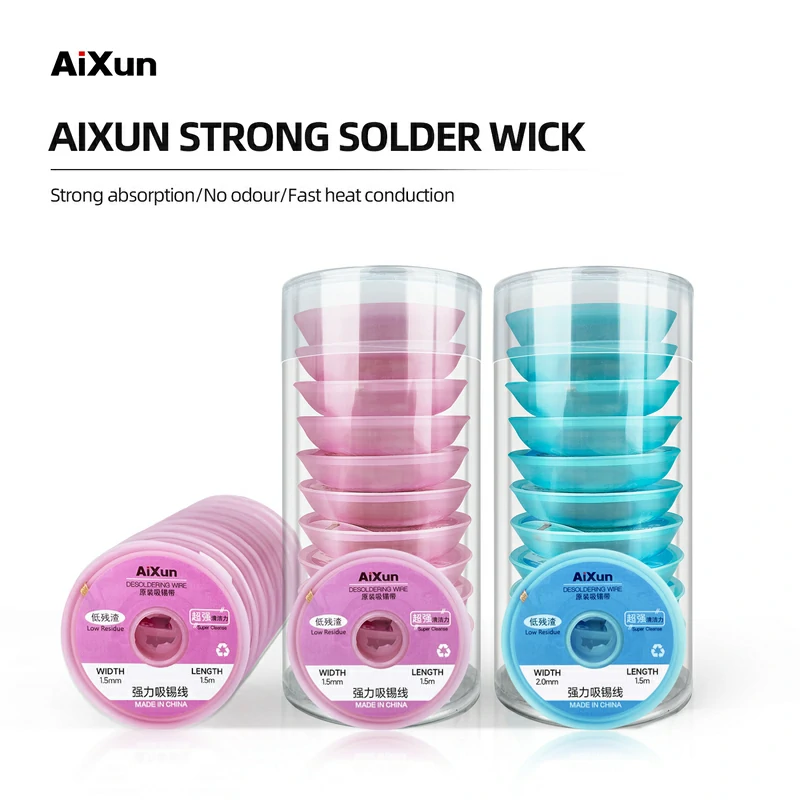
With the evolution of technology and environmental and health concerns, lead-free solder has become the preferred choice over leaded solder. Although leaded solder offers a lower melting point, higher wettability, efficient cost and a smoother and brighter appearance, it is toxic and environmentally harmful. Lead-free solder is safe but difficult to work with, has a higher melting point and is less reliable due to its lower wettability. Choosing the right solder depends on the specific project and its requirements. Therefore, it is important to understand the characteristics and differences between leaded and lead-free solder in order to select the most appropriate solder for a project.

Solder wire is a low melting point wire that can be melted with a soldering iron. There are different types of solder wire to choose from, depending on the application and soldering temperature. There are generally two types of solder wire - lead alloy solder wire and lead-free solder.
Solder wire is mainly divided into two categories:
A. Lead Solder Wire
B. Lead-free solder wire
The difference between lead solder wire and lead-free solder wire is as follows:
A. The difference between leaded and unleaded solder wire is only the difference in content.
B. The lead in solder wire is artificially added during the industrial manufacture of solder wire. The optimum ratio is: tin content 63: lead content 37.
C. Lead-free solder also contains a small amount of lead, but not as much lead and tin. There is currently no completely pure tin metal product due to the composition of its synthesis, but less lead can be considered as lead-free.
D. Both lead and lead-free solder will oxidise and corrode the tip of the soldering iron because the soldering temperature of lead-free solder is higher than that of lead. Due to its different composition, lead-free solder wire is more likely to corrode the tip of the soldering iron than lead solder wire.
A. The lustre colour of the solder wire is directly related to its quality grade and the amount of solder. The lustre colour is the main factor that affects the appearance and soldering quality. The brighter the lustre colour, the higher the tin content and the better the soldering effect and vice versa.
B. The amount of tin is the standard for judging the quality of the solder wire. The brighter the solder wire, the better the quality and the better the quality of the soldered product.
It is also an important factor in the standards of soldering performance, strength, conductivity and reliability. When using solder wire, we must use it according to the requirements of the soldered product, otherwise the welded product will have different problems. It is difficult for us to distinguish the content of the solder wire with our eyes, but it can be detected. There are many methods to detect the content of solder wire, such as gravimetric method, chemical method, spectrum detector, etc.
C. When lead solder wire is used in soldering, the flux it contains will leave impurities and a lot of smoke when it burns. The thicker the smoke, the more impurities there are in the solder wire. These impurities will affect the appearance of your soldering, and the fumes will affect the physical and mental health of the operator. Therefore, when selecting a solder wire, it is hoped that a solder wire with a lower concentration of impurities and smoke can be selected.
D. When manufacturing solder wire, the flux content should be reduced as much as possible to reduce the moisture content, but the premise of this approach is to reduce the flux content and ensure the effectiveness, strength and reliability of soldering. Because the quality of the solder wire is still reflected in the soldering result.
E. The appearance of the solder wire may be difficult to explain what the problem is, but the product packaging produced by a regular and strong brand manufacturer has a description of the solder wire, otherwise how can customers distinguish and use it? In addition, the weight of each roll of solder wire is also marked to indicate that the weight is different. In fact, the price is also different.
The melting point of lead tin wire is lower, which is more conducive to soldering; lead-free tin wire is more environmentally friendly; as everyone is responsible for protecting the environment, in order to protect the environment, lead-free solder wire must be used.

A. Good thermal conductivity, wettability and electrical conductivity
B. Soldering without spatter, moderate flux
C. Uniform flux distribution
D. No knots, easy to use and high efficiency.
Therefore, when we choose the solder wire, we try to choose the lead-free one. And a local suction device should be installed in the manual soldering station to reduce the harm to the human body caused by the "smoke" generated by the use of lead solder wire.
Still, need help or need a solder wire or tools quote?? Contact AiXun now.
 WhatsApp
WhatsApp